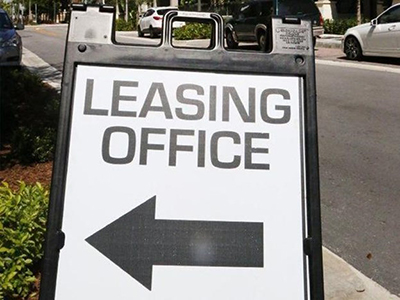By Amber Randall, South Florida Sun-Sentinel
(Source South Florida Sun- Sentinel):
This is a first in a series of stories based on reader questions regarding the housing affordability crisis in South Florida.
Q: What measures are being taken to make sure that moderately paid professionals, like teachers and most government employees, are able to secure and maintain housing? – Kimberly Rhoden, long-time teacher
A: Both rents and home prices have boomed in South Florida since the COVID pandemic began. As a result, many workers, including teachers, firefighters and government employees in South Florida find themselves either unable to buy a home or unable to afford the rent increases. And when looking for a cheaper rental, they often fail to qualify for a new apartment because they don’t meet the income requirements.
There are steps being taken at the county level to address the housing crisis, county leaders and experts told the South Florida Sun Sentinel.
However, many of these solutions will takes years to implement, they cautioned.
In Broward County, commissioners approved $47 million a few months ago to fund new projects on affordable housing, according to Commissioner Nan Rich. The money approved went to nine projects to help with financing, which would bring about 1,025 affordable units to the market by 2026.
There is also a proposed budget increase for the county’s Affordable Housing Trust Fund, which if approved, would bring $18 million to new affordable housing projects. Commissioners believe that it could fund two or three projects, adding about 400 units to the market.
For immediate relief, Broward County has given out just under $60 million in emergency rental assistance through the Emergency Rental Assistance Program — $56 million went to direct rental payments, around $1 million to utilities and about $500,000 to relocation assistance, according to Rich.
About 6,000 households have been helped through this program.
That money is directed to people who make at or below 80% of the area median income: a household of one needs to make less than $50,800 and a household of two needs to make less than $58,050.
“Right now, the need and the request have far outpaced what we have been able to get to, but this is one important way for people who are facing these issues, who are unable to pay their rent or bills to help them,” Rich said.
The portal to apply re-opens up on Aug. 18.
Palm Beach County efforts
Palm Beach County leaders are also focusing on building more units that will be affordable to the working class, according to Commissioner Mack Bernard, as well as looking at what sort of protections they can enact for tenants and what changes can be made to land use designations to make the building process easier.
One of the most significant measures is a $200 million bond for affordable housing that will go before voters in November. If approved, the money would be used to fund projects throughout the county, with the goal to try and build between 10,000-20,000 new units over the next ten years.
Many of those units would be workforce and affordable housing, potential options for firefighters, police officers, teachers, nurses and others who work and serve in Palm Beach County, said Bernard.
“We have a shortage of housing in Palm Beach County and we are laser focused on trying to create capacity.” Bernard said. “We don’t want people to have to leave South Florida.”
A housing steering committee made up of developers, government workers, lenders, attorneys and housing experts in Palm Beach County has also put together a blueprint to address the crisis by looking at four components. The first is funding and financing, with the centerpiece being the $200 million bond for housing, as well as impact fee waivers for affordable housing, according to Jack Wier, the president of the Housing Leadership Council in Palm Beach County.
The second component includes greater density of workforce and affordable housing along commercial corridors, while the third is a neighborhood revitalization effort that looks to increase homeownership by focusing on vacant properties in lower income neighborhoods, with the help of the community.
The fourth component involves analyzing and addressing issues that have been burdensome to Black Palm Beach County residents and have made homeownership difficult.
The plan goes before the board of county commissioners for approval in September.
Is rent control an option?
Rent control isn’t an easy option, as state law make is difficult for local municipalities to put such laws in place, and many leaders feel that it still won’t address the severe lack of housing in the area.
To enact rent control, municipalities have to go through a long and complicated process, including proving that there is “a housing emergency so grave as to constitute a serious menace to the general public.” Leaders would have to vote on a measure to put rent control in place and then defend their “proof” in court if a plaintiff, such as a landlord, challenged it.
And establishing that housing emergency is just the beginning. They would also have to have an election to pass a rent control ordinance with voters and then have a yearly election to keep the program going. In 1974, rent control was established on Miami Beach, but it only lasted 18 months.
At this time, no Broward or Palm Beach County commissioners are pushing for rent control measures.
Many South Floridians are facing housing challenges because of the dramatic rise in both rent and home prices. In response, the South Florida Sun Sentinel is launching a new column to address readers’ concerns about affordability. Send your questions and concerns to housing@sunsentinel.com .

